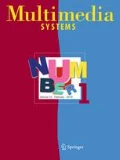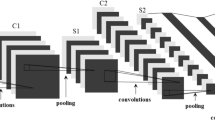Abstract
Recent studies show that the performance of deep convolutional neural network (CNN) applied to steganalysis is better than that of traditional methods. However, the existing network structure is still caused by artificial design, which may not be the optimal training network. This paper describes a deep residual network based on a neural architecture search (NAS) algorithm, to minimize the artificial design of network elements to achieve better detection results. In this algorithm, we add a long-span residual structure to the traditional layer of the residual structure, which can better capture the complex statistical information of digital images and actively enhance the signals from secret messages, which is suitable for distinguishing cover and stego images. Two of the most advanced steganographic algorithms, WOW (wavelet obtained weights) and SUNIWARD (spatial universal wavelet relative distortion), are used to evaluate the effectiveness of this model in the spatial domain. Compared with a recently proposed method based on CNN, our model achieves excellent performance on all tested algorithms for various payloads







Similar content being viewed by others
References
Bas, P., Filler, T., Pevnỳ, T.: “break our steganographic system”: The ins and outs of organizing boss. In: International workshop on information hiding, pp. 59–70. Springer (2011)
Boroumand, M., Chen, M., Fridrich, J.: Deep residual network for steganalysis of digital images. IEEE Transactions on Information Forensics and Security 14(5), 1181–1193 (2018)
Denemark, T., Sedighi, V., Holub, V., Cogranne, R., Fridrich, J.: Selection-channel-aware rich model for steganalysis of digital images. In: 2014 IEEE International Workshop on Information Forensics and Security (WIFS), pp. 48–53. IEEE (2014)
Fan, L., Sun, W., Feng, G.: Image steganalysis via random subspace fisher linear discriminant vector functional link network and feature mapping. Mobile Networks & Applications (2019)
Feng, G., Zhang, X., Ren, Y., Qian, Z., Li, S.: Diversity-based cascade filters for jpeg steganalysis. IEEE Transactions on Circuits and Systems for Video Technology 30(2), 376–386 (2020)
Fridrich, J., Goljan, M., Hogea, D.: Steganalysis of jpeg images: Breaking the f5 algorithm. In: International Workshop on Information Hiding, pp. 310–323. Springer (2002)
Fridrich, J., Kodovsky, J.: Rich models for steganalysis of digital images. IEEE Transactions on Information Forensics and Security 7(3), 868–882 (2012)
Fridrich, J., Pevnỳ, T., Kodovskỳ, J.: Statistically undetectable jpeg steganography: dead ends challenges, and opportunities. In: Proceedings of the 9th workshop on Multimedia & security, pp. 3–14 (2007)
Goodfellow, I., Bengio, Y., Courville, A.: Deep learning. MIT press (2016)
Guo, L., Ni, J., Shi, Y.Q.: Uniform embedding for efficient jpeg steganography. IEEE transactions on Information Forensics and Security 9(5), 814–825 (2014)
Guo, L., Ni, J., Su, W., Tang, C., Shi, Y.Q.: Using statistical image model for jpeg steganography: uniform embedding revisited. IEEE Transactions on Information Forensics and Security 10(12), 2669–2680 (2015)
He, K., Zhang, X., Ren, S., Sun, J.: Deep residual learning for image recognition. In: Proceedings of the IEEE conference on computer vision and pattern recognition, pp. 770–778 (2016)
He, K., Zhang, X., Ren, S., Sun, J.: Identity mappings in deep residual networks. In: European conference on computer vision, pp. 630–645. Springer (2016)
Holub, V., Fridrich, J.: Designing steganographic distortion using directional filters. In: 2012 IEEE International workshop on information forensics and security (WIFS), pp. 234–239. IEEE (2012)
Holub, V., Fridrich, J.: Random projections of residuals for digital image steganalysis. IEEE Transactions on information forensics and security 8(12), 1996–2006 (2013)
Holub, V., Fridrich, J., Denemark, T.: Universal distortion function for steganography in an arbitrary domain. EURASIP Journal on Information Security 2014(1), 1 (2014)
Jin, Z., Feng, G., Ren, Y., Zhang, X.: Feature extraction optimization of jpeg steganalysis based on residual images. Signal Processing 170(5), 107455 (2020)
Ker, A.D., Böhme, R.: Revisiting weighted stego-image steganalysis. In: Security, Forensics, Steganography, and Watermarking of Multimedia Contents X, vol. 6819, p. 681905. International Society for Optics and Photonics (2008)
Kodovskỳ, J., Fridrich, J.: Quantitative steganalysis of lsb embedding in jpeg domain. In: Proceedings of the 12th ACM workshop on Multimedia and security, pp. 187–198 (2010)
Kodovsky, J., Fridrich, J., Holub, V.: Ensemble classifiers for steganalysis of digital media. IEEE Transactions on Information Forensics and Security 7(2), 432–444 (2011)
Li, B., Wang, M., Huang, J., Li, X.: A new cost function for spatial image steganography. In: 2014 IEEE International Conference on Image Processing (ICIP), pp. 4206–4210. IEEE (2014)
Liu, H., Simonyan, K., Yang, Y.: Darts: Differentiable architecture search. arXiv preprint arXiv:1806.09055 (2018)
Ni, D., Feng, G., Shen, L., Zhang, X.: Selective ensemble classification of image steganalysis via deep q network. IEEE Signal Processing Letters 26(7), 1065–1069 (2019)
Pevny, T., Bas, P., Fridrich, J.: Steganalysis by subtractive pixel adjacency matrix. IEEE Transactions on information Forensics and Security 5(2), 215–224 (2010)
Pevnỳ, T., Filler, T., Bas, P.: Using high-dimensional image models to perform highly undetectable steganography. In: International Workshop on Information Hiding, pp. 161–177. Springer (2010)
Provos, N.: Defending against statistical steganalysis. Usenix security symposium 10, 323–336 (2001)
Qian, Y., Dong, J., Wang, W., Tan, T.: Deep learning for steganalysis via convolutional neural networks. In: Media Watermarking, Security, and Forensics 2015, vol. 9409, p. 94090J. International Society for Optics and Photonics (2015)
Real, E., Aggarwal, A., Huang, Y., Le, Q.V.: Regularized evolution for image classifier architecture search. Proceedings of the aaai conference on artificial intelligence 33, 4780–4789 (2019)
Sallee, P.: Model-based steganography. In: International workshop on digital watermarking, pp. 154–167. Springer (2003)
Sedighi, V., Cogranne, R., Fridrich, J.: Content-adaptive steganography by minimizing statistical detectability. IEEE Transactions on Information Forensics and Security 11(2), 221–234 (2015)
Tan, S., Li, B.: Stacked convolutional auto-encoders for steganalysis of digital images. In: Signal and Information Processing Association Annual Summit and Conference (APSIPA), 2014 Asia-Pacific, pp. 1–4. IEEE (2014)
Steganographic algorithm jsteg: Software available at https://zooid. org/~paul/crypto/jsteg (1993)
Westfeld, A.: F5-a steganographic algorithm. In: International workshop on information hiding, pp. 289–302. Springer, New York (2001)
Xu, G., Wu, H.Z., Shi, Y.Q.: Structural design of convolutional neural networks for steganalysis. IEEE Signal Processing Letters 23(5), 708–712 (2016)
Ye, J., Ni, J., Yi, Y.: Deep learning hierarchical representations for image steganalysis. IEEE Transactions on Information Forensics and Security 12(11), 2545–2557 (2017)
Zhong, K., Feng, G., Shen, L., Luo, J.: Deep learning for steganalysis based on filter diversity selection. Science China Information Sciences 61(12), 129105 (2018)
Zoph, B., Vasudevan, V., Shlens, J., Le, Q.V.: Learning transferable architectures for scalable image recognition. In: Proceedings of the IEEE conference on computer vision and pattern recognition, pp. 8697–8710 (2018)
Acknowledgements
This work was supported in part by National Basic Research Plan of China (JCKY2018415C001).
Author information
Authors and Affiliations
Corresponding author
Additional information
Publisher's Note
Springer Nature remains neutral with regard to jurisdictional claims in published maps and institutional affiliations.
Rights and permissions
About this article
Cite this article
Wang, H., Pan, X., Fan, L. et al. Steganalysis of convolutional neural network based on neural architecture search. Multimedia Systems 27, 379–387 (2021). https://doi.org/10.1007/s00530-021-00779-5
Received:
Accepted:
Published:
Issue Date:
DOI: https://doi.org/10.1007/s00530-021-00779-5




